As ever, the headlines mislead. Pointlessly powerful mega-EVs and SUVs propelled by supercar-grade engines aren’t the only ‘exciting’ things happening on planet car in 2021. At best they’re ephemeral (and at worst absurd), and more heartening, worthwhile signs of this industry’s ability to elevate its game can be found closer to home. Possibly as close as your own driveway.
We’re talking about hot hatches. Specifically, the more sophisticated ones, with four-wheel drive and doit-all remits. These are the machines currently leading the genre down an unexpected path that starts with a signpost that dryly reads ‘active rear-axle torque vectoring’ but ends up in a paradoxical realm where family hatchbacks can do power oversteer.
Brewing over the past half-decade and now found on several big players, torque-vectoring technology in this humble bit of the market is a genuine double-take development. The Audi RS6 and its ilk will inevitably become quicker, you can bet that Rolls-Royce will somehow make the Rolls-Royce Phantom yet more soporific and the next Land Rover Defender will probably be able to wade the Mariana Trench. But a Volkswagen Golf that can do the full Ari Vatanen? Hold the front page.
It’s why we’ve gathered a trio of these torque-vectoring hot hatches (plus one very special Japanese guest) at Thruxton Circuit’s skidpan. We want to explore how the tail-happy drivelines work and see whether the effects are as convincing as the fevered marketing bumf makes out. Time on both dry roads and slick-wet track ought to clear things up.
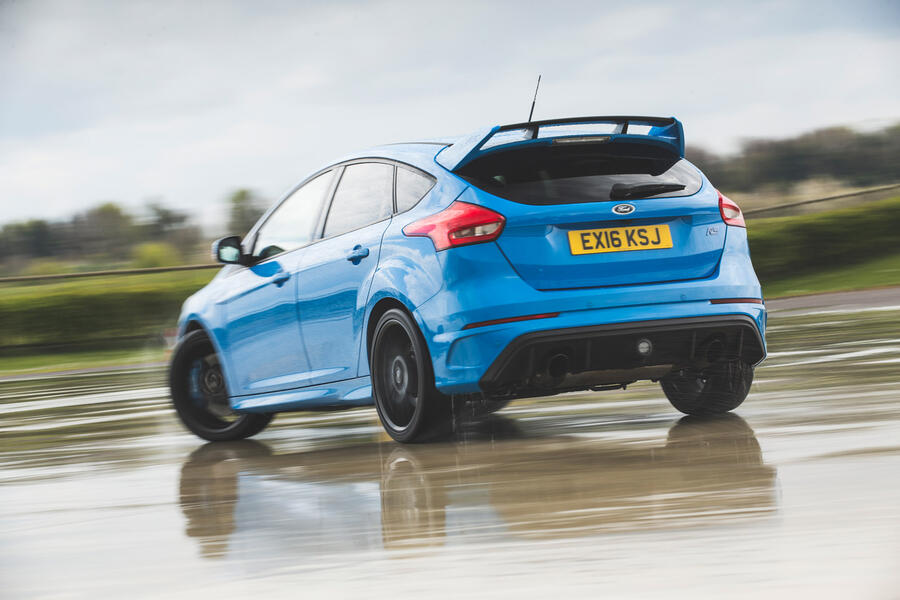
As for why hot hatch vendors are pursuing torque vectoring, the more you think about it, the more sense it makes. The super-saloon power wars were fierce (20 years ago, BMW’s BMW M5 made 400bhp; the current one touts more than 600bhp), but they were mere skirmishes compared with what has unfolded in the hot hatch playpen. Consider this: in 2002, the 212bhp of the Mk1 Ford Focus RS was deemed borderline unhinged, but the Mercedes-AMG A45 S we have here makes no less than 416bhp. That’s more than the Porsche 911 Turbo touted back when the Ford was new.
With horsepower levels becoming so high as to seem academic and emissions rules making it harder to claw redundant performance from downsized four-pot turbo engines, the industry’s solution has been to move the emphasis away from speed and towards handling. It looks like an intelligent solution, too. Nobody needs a sub-4.0sec sprint time from their hatchback, but some rear-led flare in the handling department?
Torque vectoring in road cars can be traced back to the 1990s. It’s the ability to manipulate the flow of torque so that individual wheels experience different levels of drive depending on the situation. So much like any old limited-slip differential? Well, yes, but with far more flexibility. While LSDs can split torque between two wheels, their behaviour is natural: drive is directed towards the wheel with more grip, and then only to a predetermined and limited extent. Active (rather than brake-based) vectoring systems can go to much greater extremes. They act pre-emptively rather than reactively, and they can induce behaviours that aren’t necessarily organic to the car but enhance the dynamic package.
On these new-wave 4WD hot hatches, the tech is found at the back of the car. It allows them to proactively sling available rear-axle torque to either side, in some cases with up to 100% delivered to one wheel. It’s that potential that leads us to the most salient point in all of this: if the outside rear wheel can be supplied with considerably more drive than any other wheel during cornering, you have the foundation for rear-biased handling traits – something of a magic trick for transverse-engined hatchbacks.
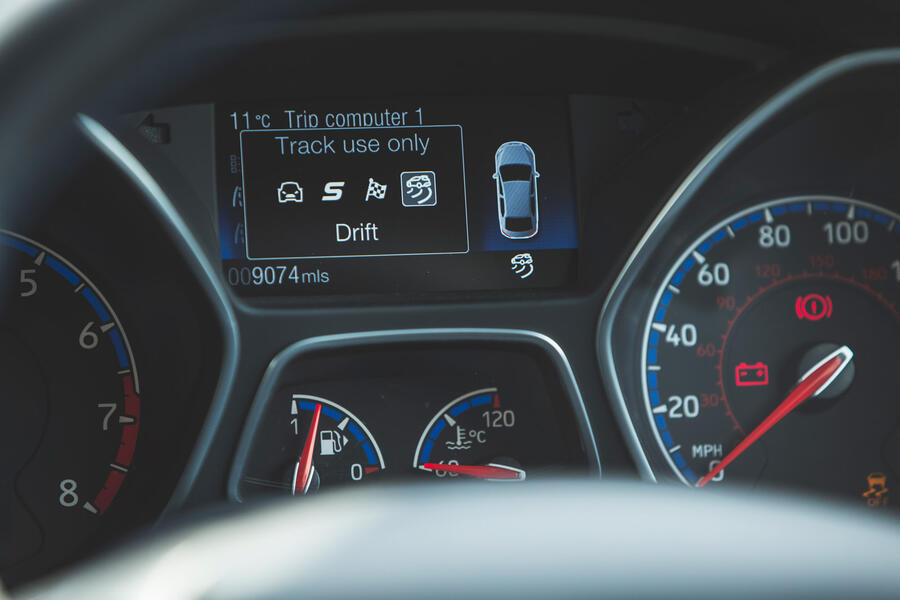
As for the how, the manufacturers have several techniques to play with, most of which are in attendance here.
We have the new Golf R (with the £2000 Performance Pack), the canard-adorned A45 S, the Toyota GR Yaris (with the £3500 Circuit Pack) and, although it’s no longer on sale, the Mk3 Focus RS. Because it would be rude not to invite the beefcake Ford that kick-started the trend.
This quartet differs dramatically in price, power and character, but they all share that ability to deliver more torque to the rear axle than the front axle. Or, at least, to fool the synapses in your backside into believing that is what’s happening.
The system in the Golf R works like this. Torque flows through the gearbox and into an open differential on the front axle. From that sprouts an output shaft that runs to the rear axle. Previously on the Golf R, that shaft fed into a clutch pack that, once engaged, allowed 50% of total engine torque to drive the rear axle through another open differential, with the torque split equally between the wheels. The Mk7’s ‘Gen 5’ Haldex clutch pack worked rapidly, too, being electronically governed and preloaded with hydraulic pressure.
However, in the Mk8, there’s no clutch pack before the back axle. The propshaft that unifies each end of the car instead takes drive into the rear axle via a pair of simple bevel gears; and it’s the electromechanical clutch packs that sit either side of those bevel gears that control and manipulate the amount of torque that ends up at each wheel. If the left-hand pack is completely open and the right-pack fully engaged, as is sometimes the case in Drift mode, all available torque (again, only up to half of what the engine is making) will surge to the right-hand wheel – and vice versa. But any ratio is possible, because that’s what clutch-based vectoring permits. It’s up to the development engineers to devise how the torque splitter should behave, depending not only on driving mode but, within that broad parameter, also the throttle position, steering angle, cornering g-forces, what the electronic stability programme (ESP) is saying… and on it goes.
“Drift mode is an over-the-top application,” says Jonas Thielebein, the engineer who oversaw the Mk8 Golf R project, “because normally you don’t want your car to slip.” He says the sweet spot is generally to have a less extreme calibration, where the car rotates just a touch, to the extent that the driver can feel it but onlookers can’t actually see it. “That’s the way to drive fast, and that’s what we try to do,” he says, before explaining that if you do ever explore the car’s Drift mode, one of the rear clutch packs really does remain “nearly permanently open”.
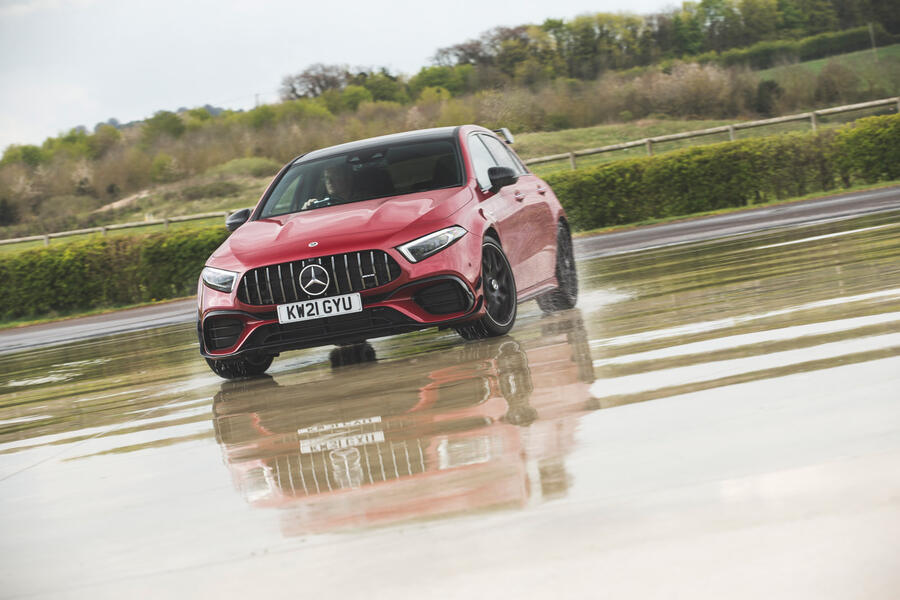
Volkswagen developed this system with Magna – the engineering jack of all trades that contract-builds the Mercedes-Benz G-Class and Jaguar I-Pace. Magna is also behind the A45’s hardware, which is in broad terms identical to that of the Golf R, albeit with more clutch plates, to cope with the hand-built engine’s huge output.
According to Lars Henzler, a long-standing AMG man who worked on the SLS, the system ate up two years of application work, with the goal being intuitive response and stability, given the performance potential.
“We want a very neutral car,” he says, explaining that AMG doesn’t exaggerate too greatly the level of the torque discharged into the outside wheel. ‘‘Even in Drift mode, it makes no sense to move absolutely all the torque to the outer wheel, because the car becomes too aggressive to drive.”
He’s alluding to the other side of the vectoring equation: while you can bias the outside rear wheel for oversteer, during cornering you can also accelerate the inside rear wheel for precise yaw damping without having to rely on the ESP. Far from it being a gimmick, Henzler believes that this technology is a potent tool for refining a transverse-engined hatch’s handling balance and upping both pace and driver confidence.
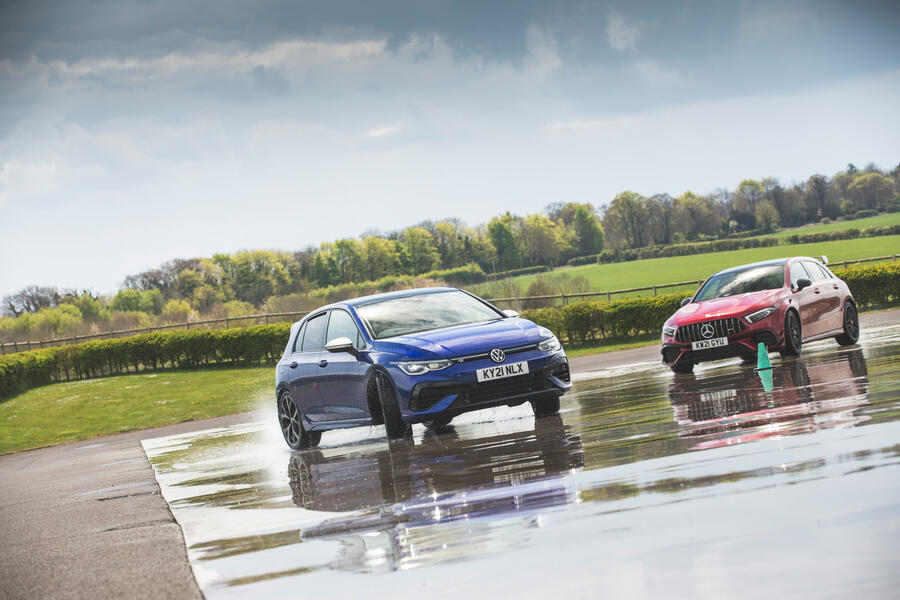
The pioneering Focus RS, which landed three years before the A45 and five before the Golf R, works in much the same way. GKN’s Twinster module siphons torque using clutch packs either side of the rear bevel gears, with one key difference: the rear axle is geared to ‘overspeed’ compared with the front, by roughly 2%. It can therefore deliver not 50% but up to 70% of the available drive to the back axle, all of which can then be channelled to the outside wheel. Yes, it’s a brilliantly ambitious set-up.
Finally, the GR Yaris. Frankly, it has more in common with 1990s Group A rally cars than any of the others, and it doesn’t in strict terms have the ability to vector torque. In Circuit Pack form, instead of open diffs at each end, the little Toyota uses traditional, ‘passive’ torque-sensing diffs, which bias torque to the wheel with most grip, once the other loses traction. However, as with the Ford, the rear axle is geared to overspeed relative to the front, meaning that when the Haldex-style clutch pack that sits along the propshaft is fully engaged and the axles are locked tightly together, you have a 30:70 front-to-rear torque bias. The result is an oversteer handling balance, and one that should in theory feel entirely natural.
And so to the big question: are these systems worth the trouble? It’s a subtly different question to: ‘Do they actually work?’ To that, the answer is they absolutely do. On the Thruxton skidpan, which is so slippery that it essentially rules out weight transfer in the process of initiating oversteer and thus isolates the driveline, the A45 and Golf R understeer momentarily then flick their snubby tails out as the outside rear wheel is overloaded. You’re required to turn back into the slide often to feed the slip angle (as you would in an old Mitsubishi Lancer Evolution or Subaru Impreza WRX) and yaw moments are just that: moments.
You can’t develop or shape slides, Ã la BMW M2, although nobody would expect that. Yet there it is: genuine power oversteer. The Focus RS is the same, albeit a little snatchier when it lets go, and interesting to note is that the GR Yaris is by far the most resistant to provocation. Its more mechanically organic set-up craves grip and neutrality, and the lack of programmable clutch packs means engineers can’t simply command it to showboat on a whim. It’s a hard-nosed homologation operator.
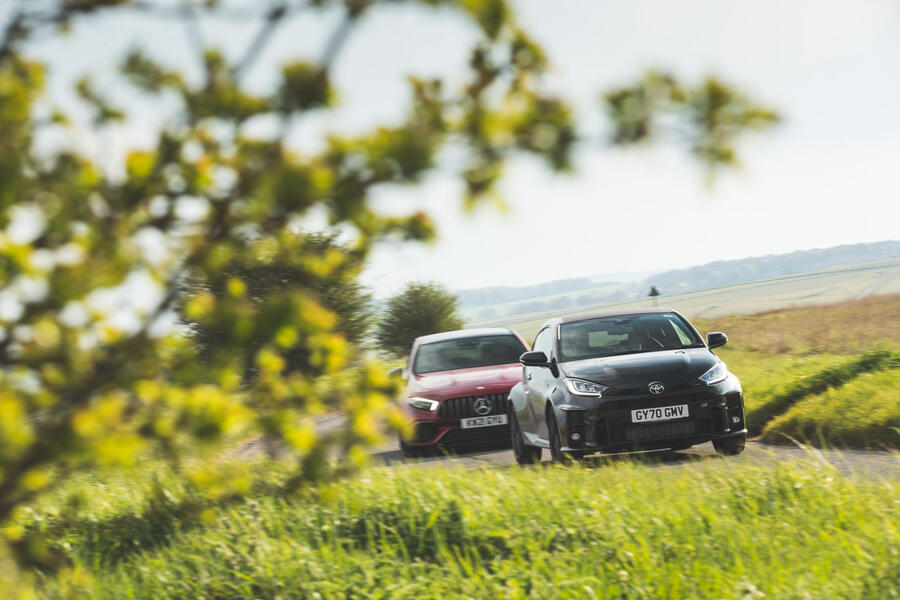
Of course, what happens on the road matters more. Much more. Here the vectoring effects are less obvious but all the more satisfying. It’s what Thielebein was getting at: that it’s more important for these systems to enhance and enliven the car’s handling balance within the limit of grip, and in an everyday setting, than perform silly tricks on track.
Duly, the Golf R will at times tighten its line under throttle, as if it’s possessed some demonically tight LSD in the back axle, only without the spikiness at all other times. It’s artificial, but a good imitation and pretty enjoyable. Meanwhile, the A45 prizes composure, mainly because it needs to, and its engineers have clearly tuned the rear axle to help deliver unflappable neutrality.
Naturally, the Focus RS has the wildest temperament. It seems to positively invite instability, possibly because the hydraulic vectoring set-up is slower to react but then does with more vigour, and the tuning is less deft. Back in 2015, this car really was on the frontier.
What’s clear is that, despite the similar hardware, there are real differences in application. That’s the most intriguing bit about these clever axles. Their tunability lets the personalities of their engineers come through more. After all, every car is to some extent a reflection of those who built it. So yes, vectoring makes 4WD hot hatches more agile and capable than ever, but it makes them more expressive and interesting, too. In a class predicated on practicality, you really do have to welcome that.
Vectoring from 1996 to today
Torque vectoring is one of those technologies that sidled into the motoring vocabulary almost unnoticed and now, well, any car with an ounce or two of grunt is likely to have it in some form or another. It’s arrived partly through design and partly by accident, and there are a number of ways of achieving the same result, some more complicated than others.
At the beginning, it was by design. Mitsubishi used a combination of a conventional differential, an additional gearset and clutch packs in the Mk4 Lancer Evolution’s rear axle to push more torque to one wheel or the other. The first BMW X6 used a similar idea but executed in a different way with two planetary gearsets, two clutch packs and a differential gear. It was the brainchild of GKN, based on a concept by Prodrive and executed by ZF.
The common thread with these is a conventional differential in the mix to allow drive to both wheels while allowing the outside wheel to rotate faster than the inside wheel. For torque to be increased to one wheel on the same axle in preference to the other, the extra gearsets are added to ‘overspeed’ the outside wheel in a corner and ease the car into oversteer.
The GKN system does this by using the clutches to divert torque via one of the planetary gearsets rather than directly to the wheel.
The only other way is to allow the differential to brake one wheel to force torque to the other (vectoring by braking).
So far so good, but then came the CO2 panic. Manufacturers scrambled to achieve any fractional increase in efficiency, and part-time four-wheel drive was one way of doing that.
Then GKN realised that two clutch packs in the rear axle slipped under electronic control could do the same job, plus it would let the rear wheels be disconnected to cut fuel consumption or vector torque one way simply by slipping just one of the clutches.
The Twinster concept was applied first in the Ford Focus RS, and then a version was used by Land Rover in the Evoque. Labelled Active Driveline, it went a step further with a simple clutch at the front to disconnect the entire rear driveline behind the engine and save another increment of fuel.
So much for vectoring across the axle, but what about front-rear torque split? A 50:50 split is achieved by adding a clutch in the centre and slipping it a little. Increasing it to the rear is done by overspeeding the rear axle in relation to the front, with a fractionally higher gear ratio. If the gearing is set to achieve, say, 30% front and 70% rear by default, 60:40 can also be achieved just by letting the centre clutch slip a little.
READ MORE
The classic hot hatches disappearing from our roads
Best hot hatches through the ages: Autocar's top five face off

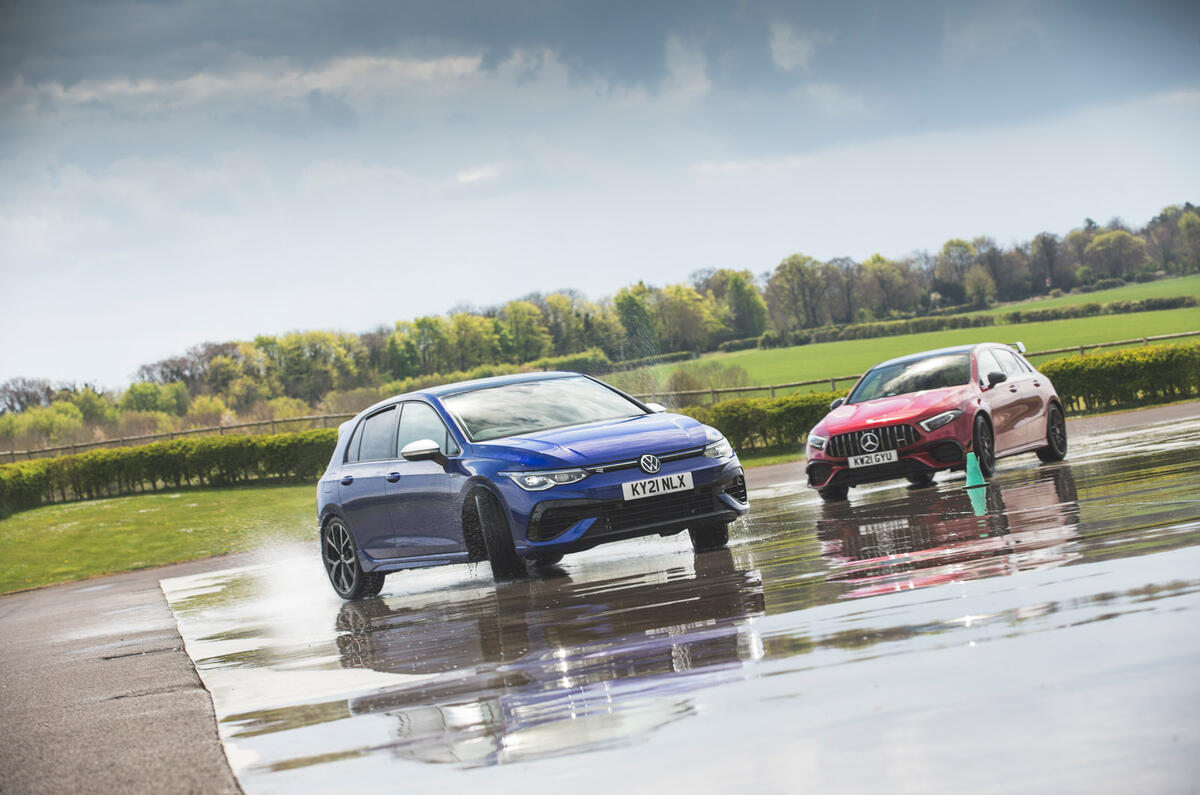
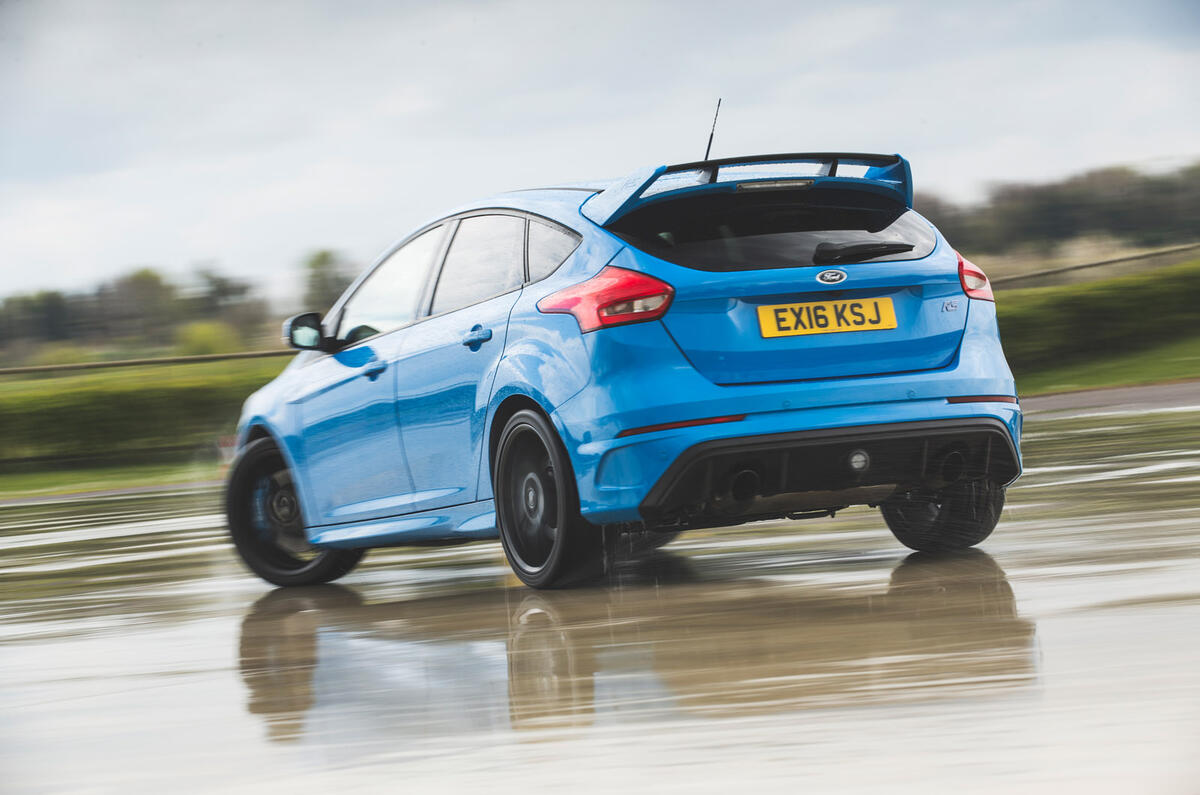
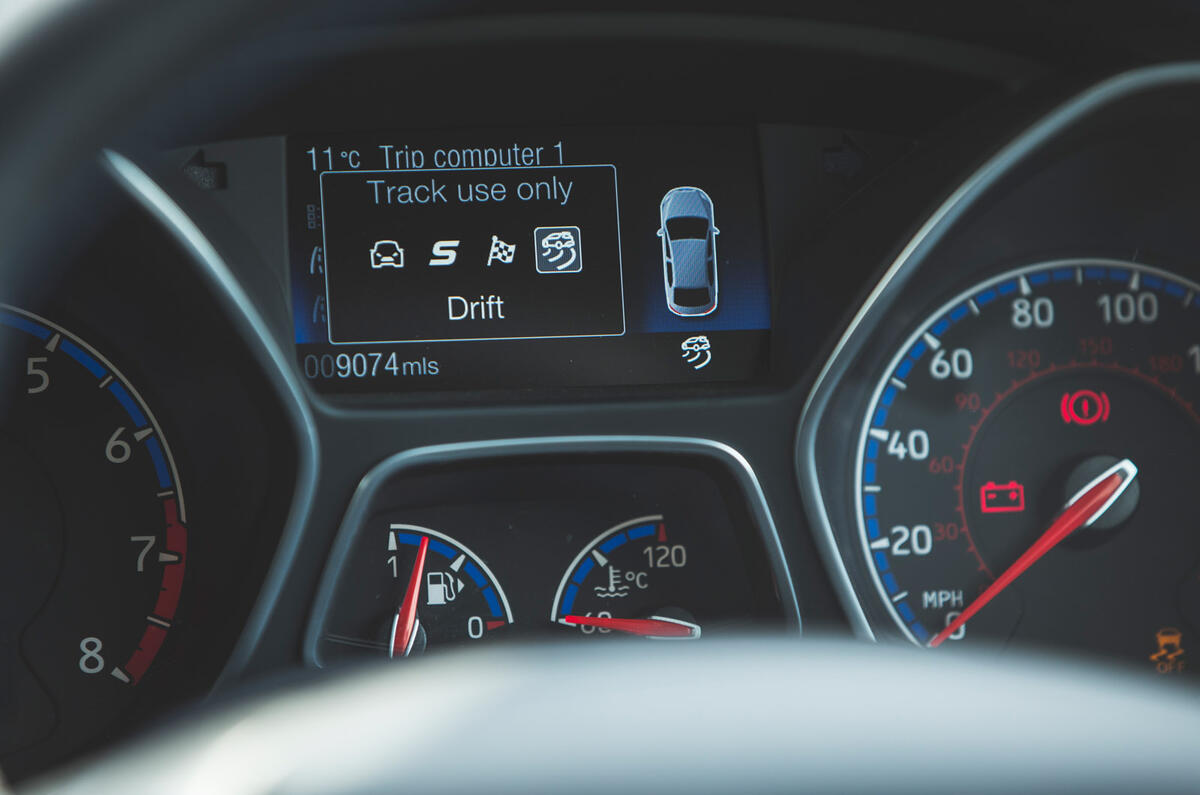
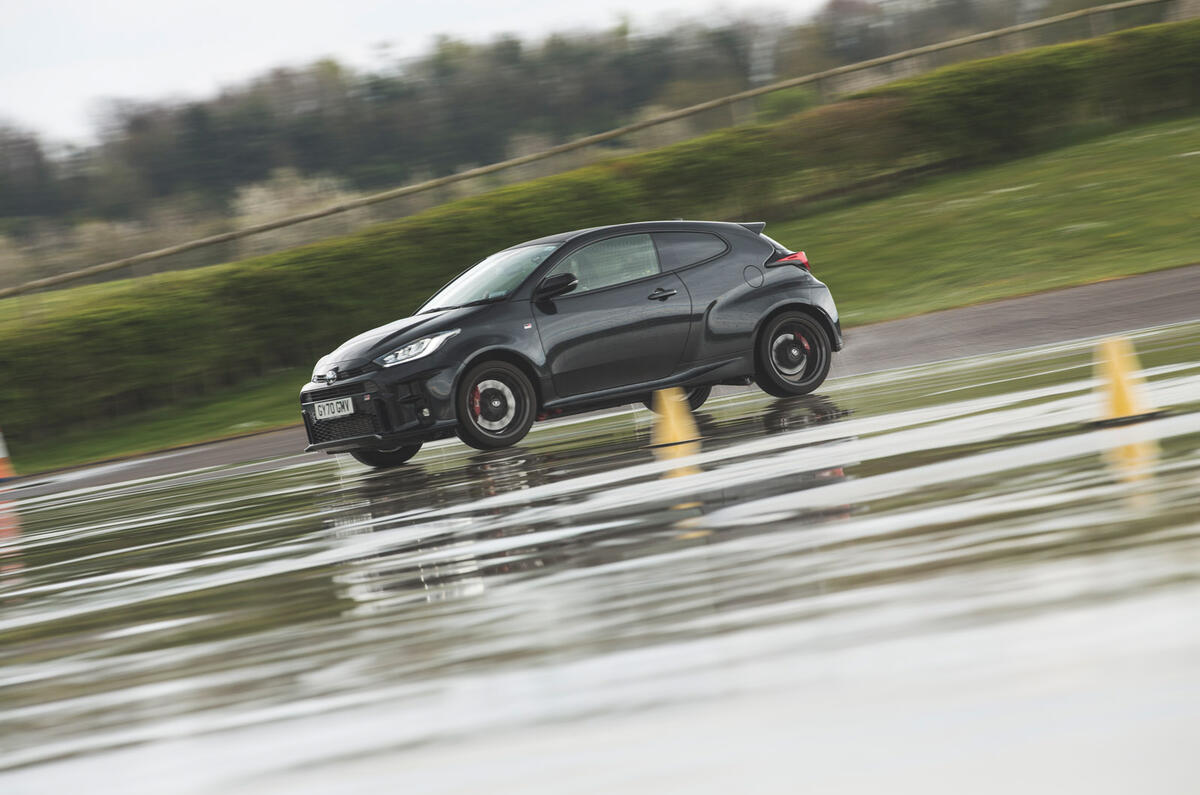
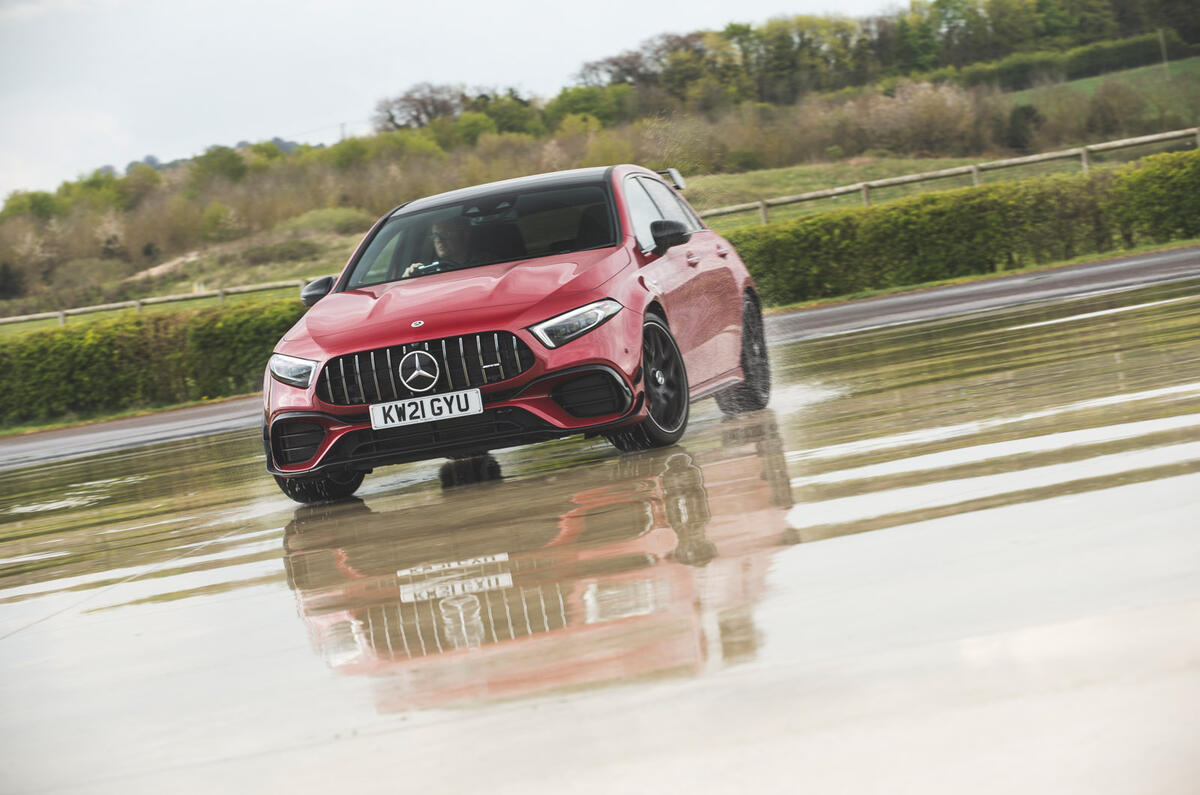
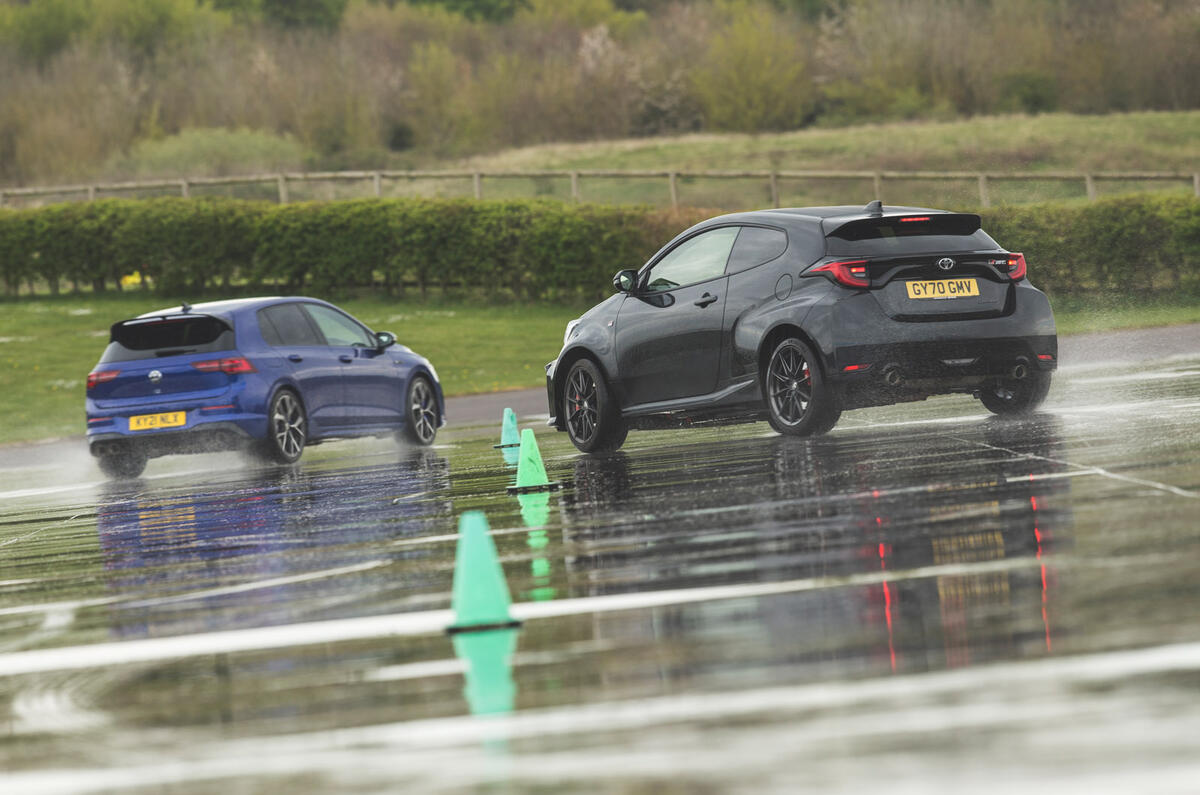
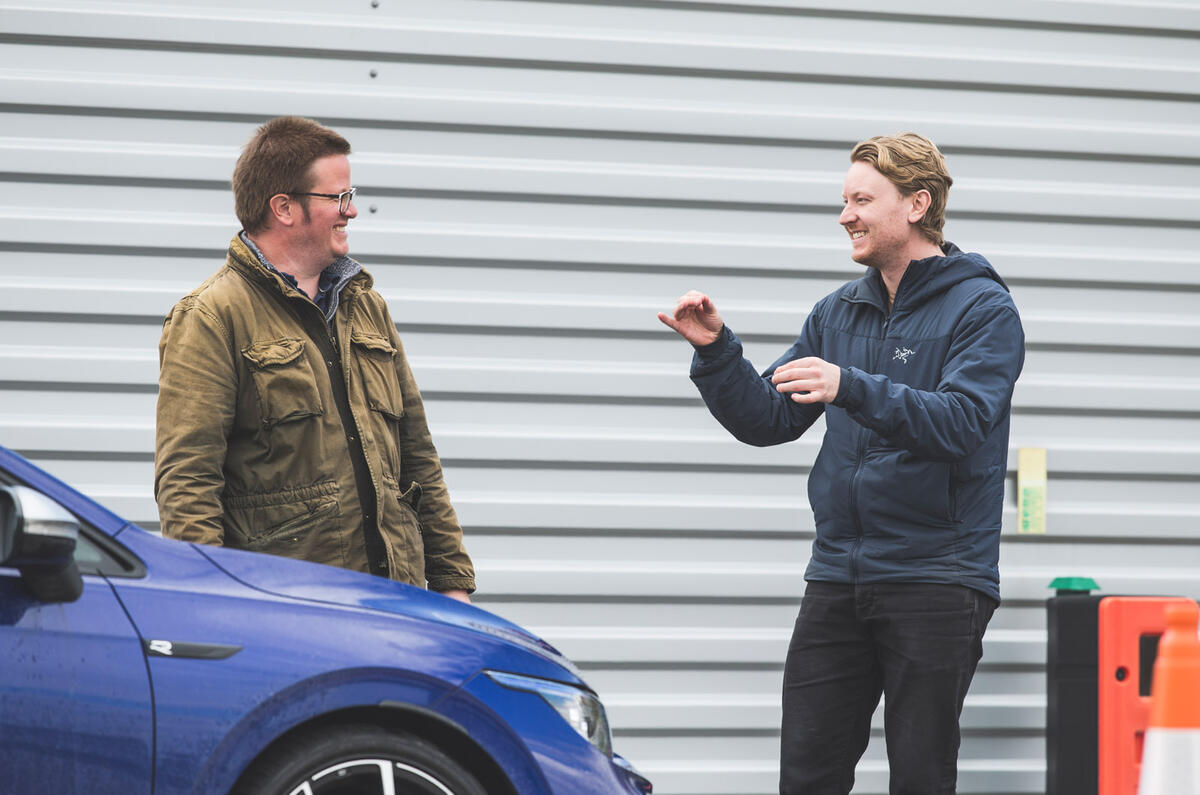
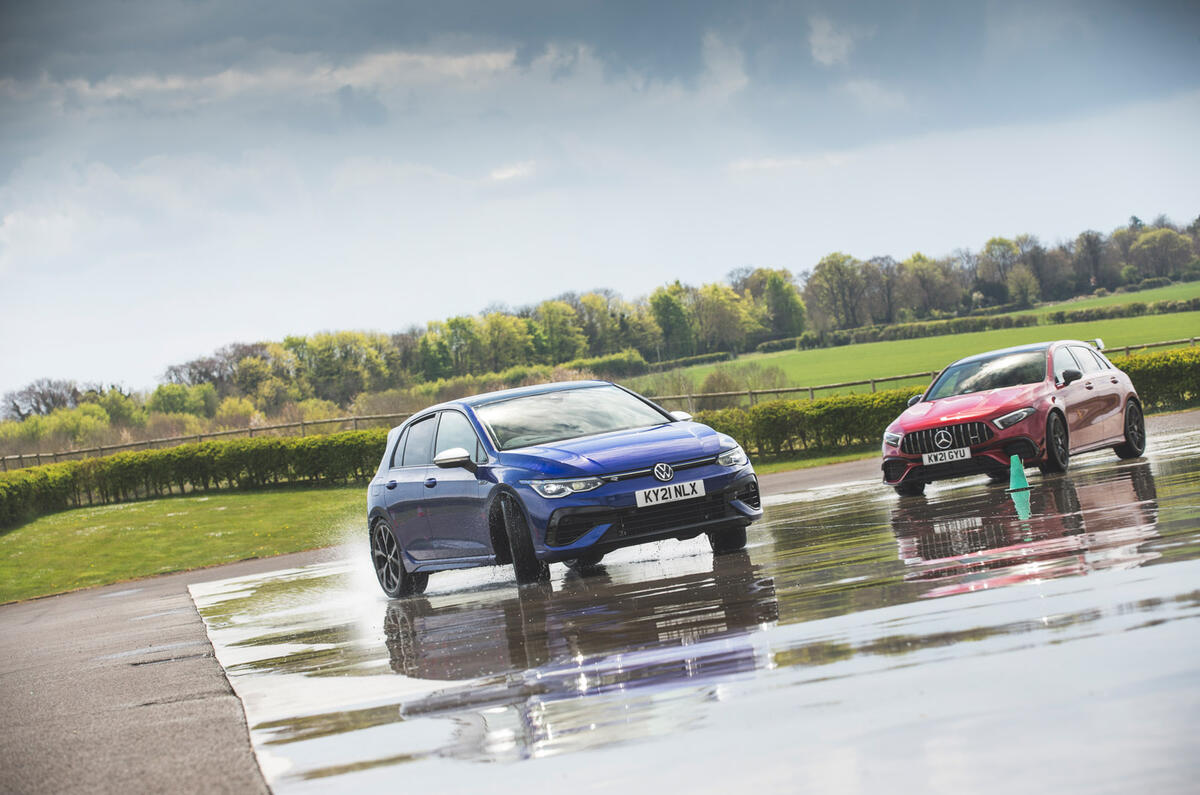

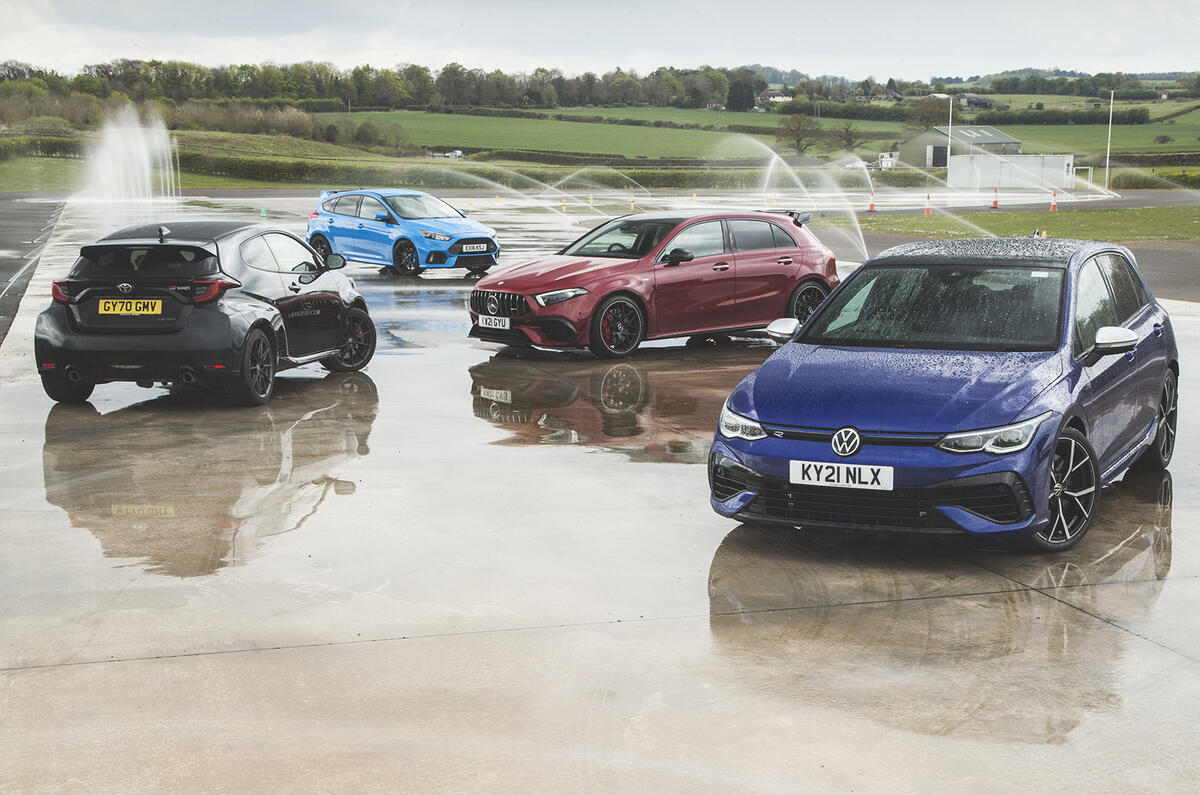
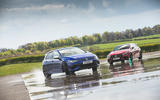
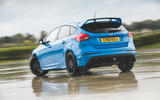

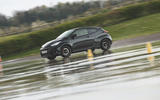

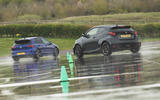

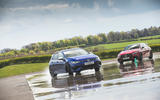








Join the debate
Add your comment
BlahBlah43, perhaps you would like to explain why you think, drive to all the wheels on a car with four wheels, is not four wheel drive but, is all wheel drive?